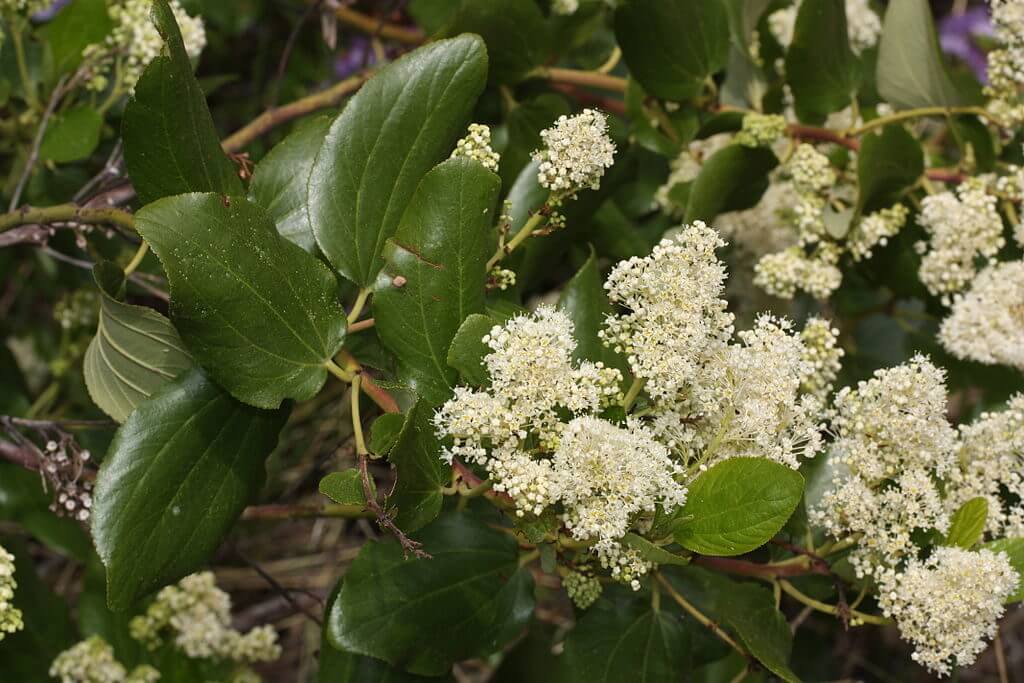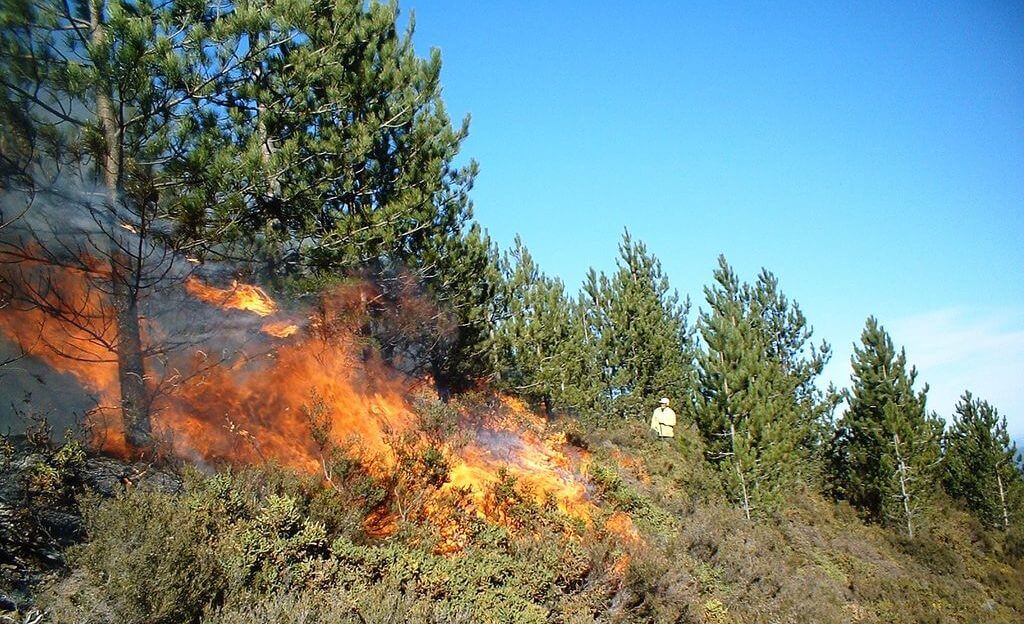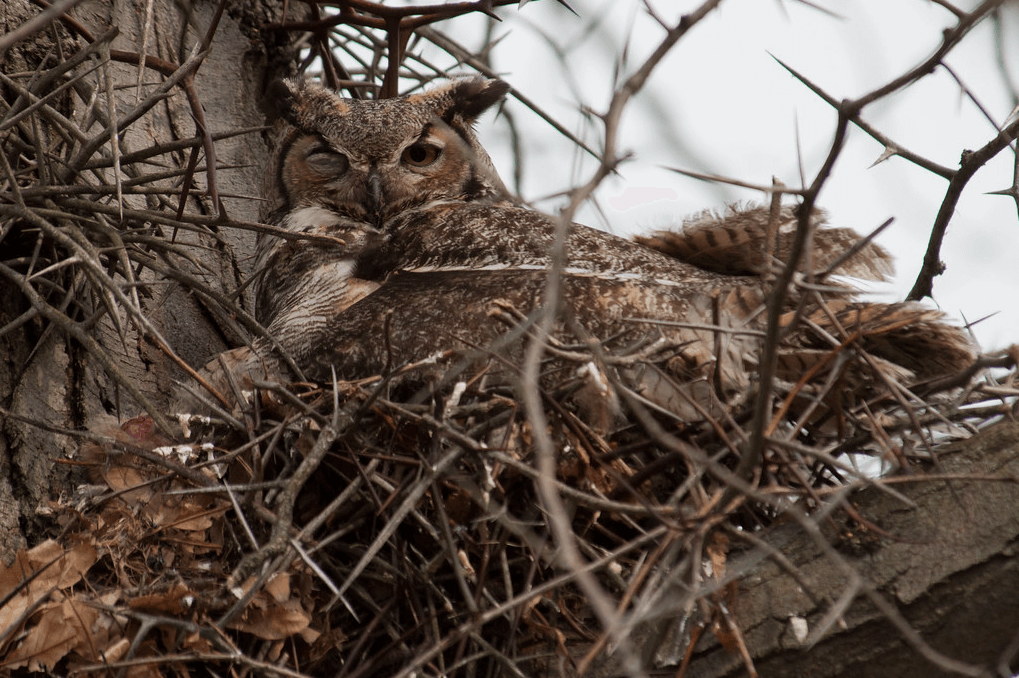Ceanothus
by Mike Hillis
Broadcast 5.28 and 6.2.2017 and 9.1 & 9.4.2020

Ceanothus velutinus, photo credit: Walter Siegmund
Listen:
Thirty-plus years ago when I was studying wildlife management at Oregon State University, we learned that Ceanothus was a highly preferred forage plant for deer and elk during the winter. I knew that Ceanothus was the genus name of a large group of western shrubs and I even knew enough to recognize a few of the individual species back then.
In the Missoula area we know it as Ceanothus velutinus, a plant with more common names than zip codes in California — varnish-leaf Ceanothus, slick-leaf Ceanothus, mountain balm, buckbrush, cinnamon brush, and more. It’s not hard to identify. It’s the only waist-high shrub with non-deciduous leaves — meaning that it keeps its leaves year-round — that we’re likely to see.
As a young biologist I quickly noted that Ceanothus was indeed readily consumed by deer and elk. My problems began when I tried to categorize exactly where I could find it. Sometimes I came across it at high elevations. Other times I found it at low elevations. Some areas had it only on east-facing aspects, others only on south-facing aspects. In some locales I couldn’t find it at all except for a few scattered, nearly dead individuals and no sign at all of any young plants.
So what was going on? Why the unpredictable distribution? And what about those places where the only Ceanothus plants to be found were very old and near death?
The answer is that Ceanothus have serotinus seeds, or seeds that only germinate after being exposed to the heat of a wildfire. It’s why Ceanothus has patchy distribution and why I was only finding it in areas that had burned in the not-too-distant past. Ceanothus is abundant in burned areas and not so in areas in which fires had been suppressed for decades.
Ceanothus seeds must lay dormant in the soil for long periods of time for this reproductive strategy to work. Theoretically, then, prescribed burns should result in Ceanothus seedlings, even in areas devoid of living plants. After I moved to Montana in the late ’70s, I started planning prescribed burns on winter ranges that lacked Ceanothus, with the objective of increasing its abundance.

Photo credit: Paulo Fernandes
We did increasing numbers of prescribed burns on the Lolo National Forest throughout the late 1970s and early ’80s, and while we got wonderful responses from serviceberry and chokecherry and other succulent forage plants for deer and elk, no Ceanothus! Obviously, there was more to the puzzle than just exposure to fire.
The final clue to Ceanothus distribution came after comparing wildfires to prescribed burns. Simply stated, we found that wildfires resulted in Ceanothus seedlings and low-intensity prescribed burns did not. Apparently, Ceanothus seed needed not just exposure to heat, but prolonged exposure to fairly intense heat.
As a test, we prescribe-burned 500 acres of winter range in the Fish Creek drainage near Superior. The area, which used to burn every 15 to 30 years, had last burned in 1910. We first selectively logged the area to remove the small-diameter Douglas-firs that had encroached since the 1910 fire and to protect the scattered old-growth Ponderosa pine on the site.
We had the logger leave most of the tree tops as fuel so that the following prescribed burn would generate some prolonged heat more typical of a wildfire. We also specified that the burn be done with 10-20 mile-per-hour winds to further increase the fire’s intensity.
I surveyed the area the following June, two months after the prescribed burn was completed, and bingo — the ground was covered with hundreds of Ceanothus seedlings per acre, very comparable to what I’d found after wildfires.
Ceanothus is one of those organisms like morel mushrooms, black-backed woodpeckers, or even elk that have evolved with fire and are therefore dependent upon it. To keep them around we have to keep fire in our box of forest management tools. And while that fact may not be very pleasant in these times of smoke-filled skies and displaced homeowners, it’s maybe a little comforting to know that wild organisms have been through these kinds of events countless times before and have evolved adaptive coping mechanisms.
Every week since 1991, Field Notes has inquired about Montana’s natural history. Field Notes are written by naturalists, students, and listeners about the puzzle-tree bark, eagle talons, woolly aphids, and giant puffballs of Western, Central and Southwestern Montana and aired weekly on Montana Public Radio.
Click here to read and listen to more Field Notes. Field Notes is available as a podcast! Subscribe on iTunes, Google Play, or wherever you listen to podcasts.
Interested in writing a Field Note? Contact Allison De Jong, Field Notes editor, at adejong [at] montananaturalist [dot] org or 406.327.0405.
Want to learn more about our programs as well as fun natural history facts and seasonal phenology? Sign up for our e-newsletter! You can also become a member and get discounts on our programs as well as free reciprocal admission to 300+ science centers in North America!












